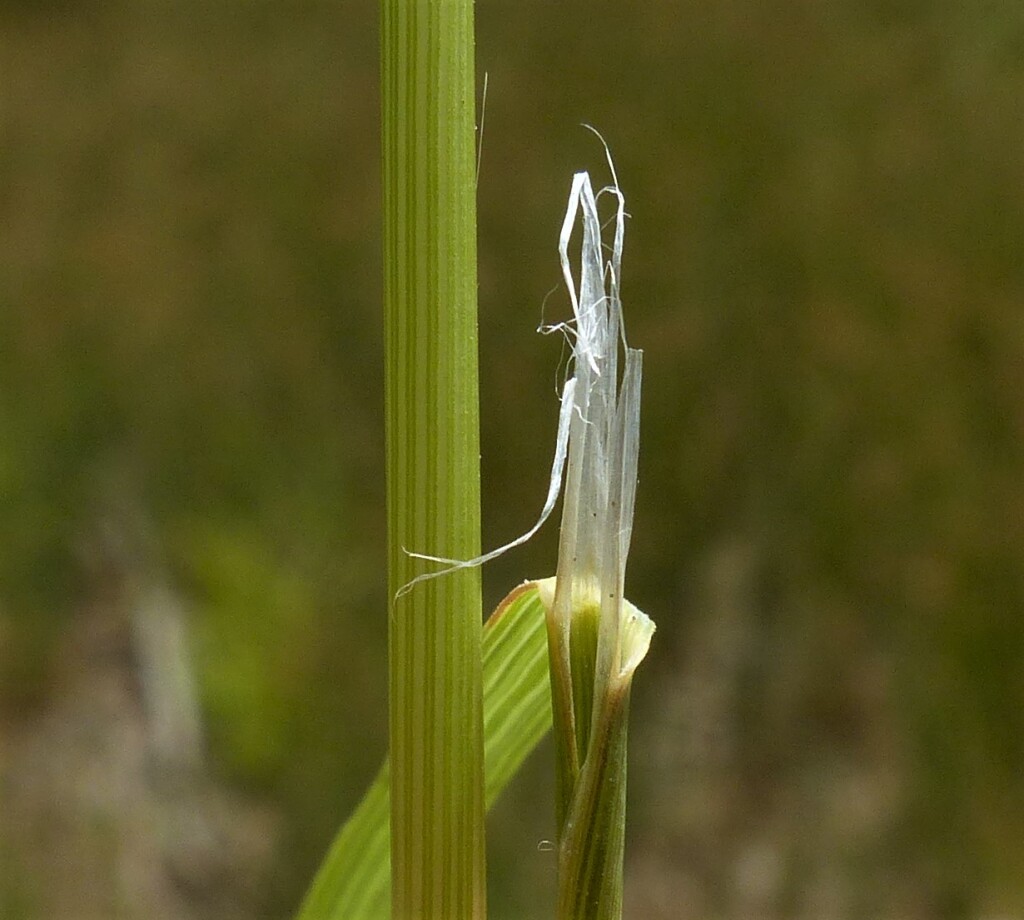Amphibromus macrorhinus
S.W.L.Jacobs & Lapinpuro Long-nosed Swamp Wallaby-grassSlender tufted perennial; culms to 1 m high. Leaves glabrous, smooth or slightly scabrous; blade flat to folded, to 30 cm long and 1.5–4 mm wide; ligule acute, 6–17 mm long. Inflorescence a slender to spreading panicle, to 40 cm long. Spikelets 4–6-flowered, 10–19 mm long (excluding awns), green or purplish; glumes acute, the lower 3-nerved, 4–6.5 mm long, the upper 5-nerved, 4–8 mm long; lemma 5.3–9 mm long, densely scabrous in the lower half, apical teeth 4, virtually equal or the outer pair shorter, 0.5–1.5 mm long; awn 10–20 mm long, inserted 50–60% of the lemma length from the apex, column 3.5–7 mm long; palea slightly shorter than lemma. Flowers Oct.–Dec.
LoM, Wim, VVP, VRiv, MuF, GipP, OtP, Gold, CVU, GGr, DunT, NIS, EGL, HSF, HNF. Also WA, SA, NSW, Tas. Scattered through Victoria, except mallee and mountain areas. Largely coextensive with A. nervosus, largely replacing it in the Euroa-Wangaratta area but generally less common.
In most features resembling A. nervosus but usually a smaller plant with inflorescence branches often spreading and spikelets often slightly longer. Occasional specimens appear intermediate between the two species.
Walsh, N.G. (1994). Poaceae. In: Walsh, N.G.; Entwisle, T.J., Flora of Victoria Vol. 2, Ferns and Allied Plants, Conifers and Monocotyledons, pp. 356–627. Inkata Press, Melbourne.
 Spinning
Spinning



